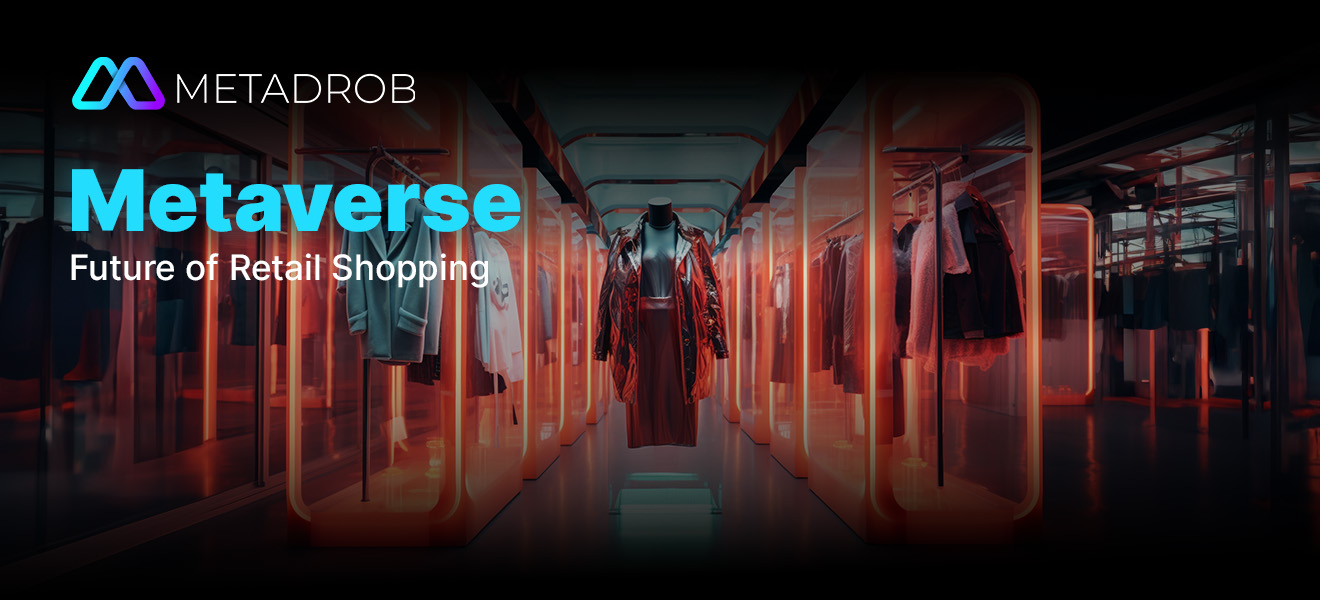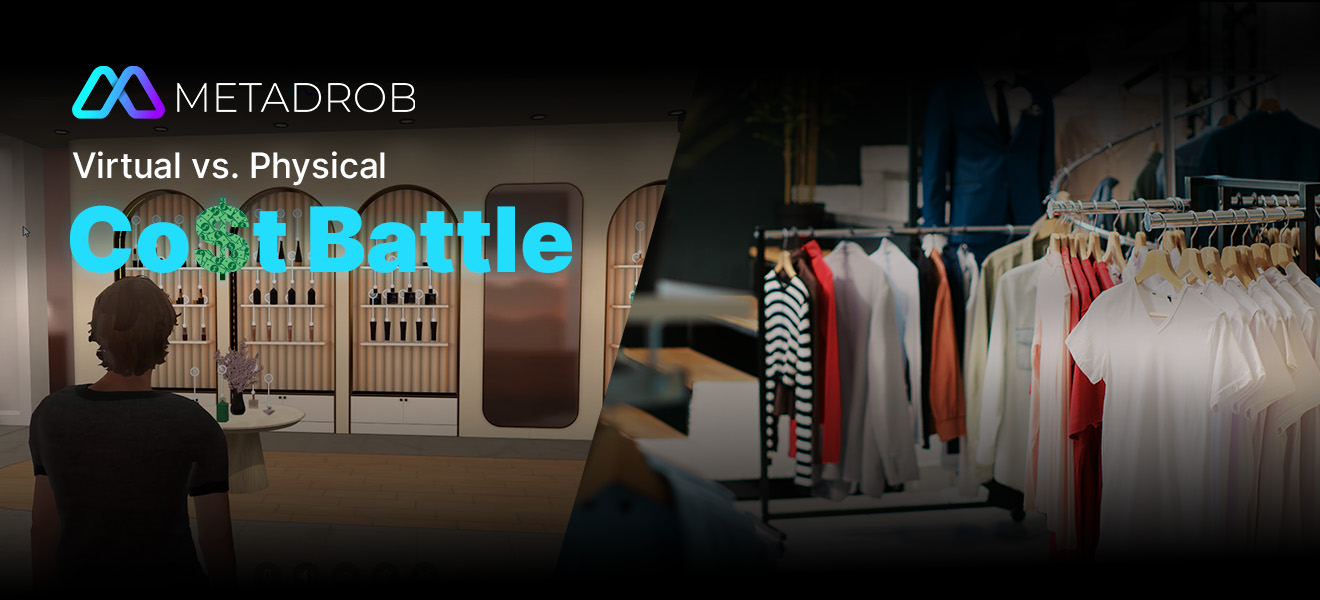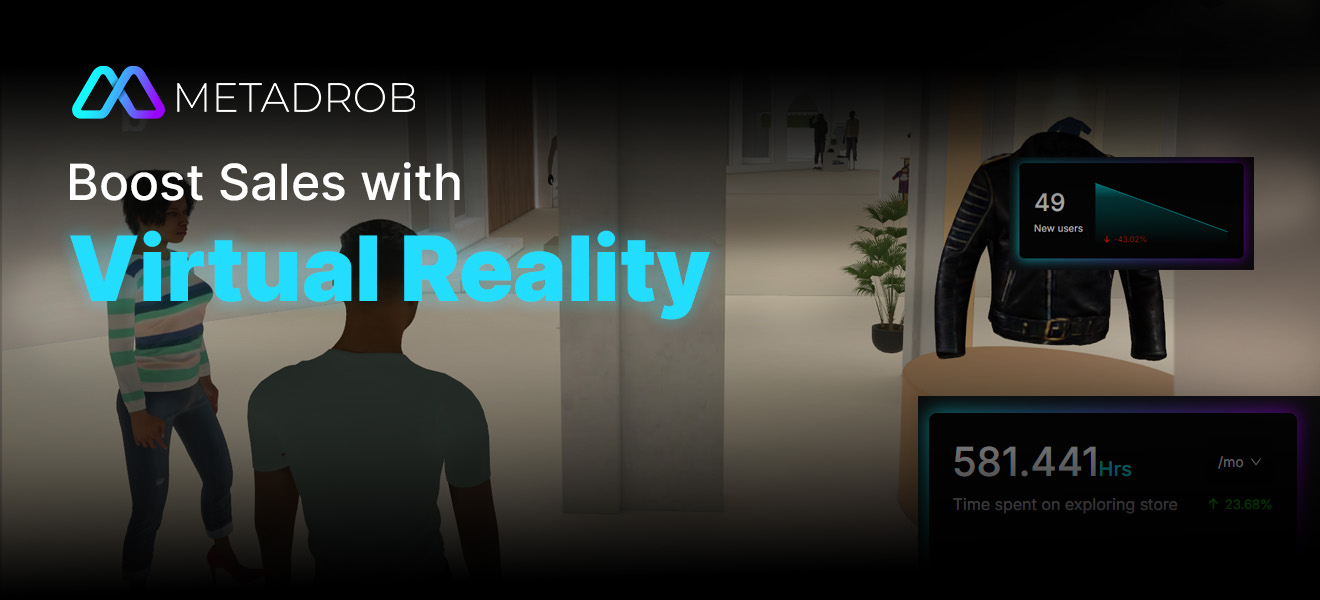Top Benefits of 3D Virtual E-Commerce Stores for Retailers and Customers

Traditional methods of product representation are no longer satisfactory to consumers as they want to be more involved with the products they intend to buy. This is where 3D visualization comes in—a tool revolutionizing the market completely.
According to the market analysis done by Fortune Business Insights, the market size of 3D software is likely to grow to $9.58 billion by 2030. This shows that firms are waking up to the fact that this technology has huge potential.
This article will outline the various ways through which the application of 3D product visualization can help boost the sales and engagement of your eCommerce business, as sales and engagement are bound to enhance. So, let’s start.
Ways By Which 3D Visualization Boosts Ecommerce Sales and Engagement
- Gives Realistic, Life-Like Setting To Your Product Catalog
- Lowers The Return Rate & Boosts Sales
- Guarantees Product Quality With a Try-and-Test Approach
- 360-Degree View of Your Product Lines
- Eliminates The Hassle of Style Mismatch
- Enables Customers To Make Confident Buying Decisions
- Enables Sales Automation To Streamline Efficiency
- Gives a Sense of Product Ownership
Product catalogs are not an exception to the immersive experiences demanded by the digital age. Businesses may create dynamic, interactive showcases from static product photos by integrating 3D visualization. Consider allowing a consumer to view a device from every perspective or spin a piece of furniture to study its fine features.
There is no other engagement level like this, which strengthens the bond between the customer and the product. Beyond visual attractiveness, 3D visualization has useful advantages. Showcasing products in the configurations they want gives customers the confidence to buy.
It becomes easy, for example, to choose the ideal color for a sofa or to figure out how big an electrical gadget is. In the end, this improved product experience increases sales, lowers returns, and increases customer pleasure.
Reducing return rates significantly is one of the biggest benefits of 3D visualization in e-commerce. Retailers can greatly reduce the likelihood of customer dissatisfaction with their purchases by providing customers with an accurate and interactive portrayal of a product.
Customers may carefully inspect things from all sides, choose exact colors, sizes, and designs, and even see how objects might fit in their locations with the help of a 3D product configurator. Such specificity eliminates the element of surprise, which frequently results in buyer regret.
As a result, companies see a significant drop in product returns, which lowers costs and boosts customer satisfaction. According to a Shopify survey, businesses that used AR configurators and 3D images had a whopping 25% lower return rate than their competitors.
Overcoming the gap between the digital and physical product experiences is one of the biggest problems that e-commerce faces today. Technologies such as augmented reality (AR) and 3D visualization provide a potent remedy by letting clients “try before they buy.”
These tools lessen the uncertainty of internet purchasing by offering realistic, interactive representations of objects. Customers have a better sense of product quality, size, and style by using virtual try-ons or seeing how furniture will fit in a room.
They are more equipped to make decisions as a result, which increases purchasing confidence and lowers return rates. In essence, 3D visualization creates a more engaging and tangible online buying experience, which builds brand and customer loyalty.
Static product photos are becoming less common as customers want more interactive buying experiences. 360-degree product views bridge the gap between online and offline buying, providing a revolutionary solution.
Retailers can effectively highlight a product’s intricate details and distinctive features by offering a comprehensive picture of the product. Customers may inspect things from every perspective with the help of this interactive feature, which promotes a deeper knowledge and relationship.
Furthermore, by reducing buying uncertainty, the capacity to view things in three dimensions can considerably lower return rates. In the cutthroat world of e-commerce, 360-degree product views are quickly emerging as a vital tool for increasing client satisfaction and boosting sales.
In today’s world of customized shopping, brands must release product lines that accommodate their customers’ personal preferences. Now, 77% of consumers are more inclined towards brands providing personalized experiences.
However, matching products to different tastes can be a difficult undertaking. 3D visualization turns out to be revolutionary. Customers may build goods that precisely match their vision by experimenting with numerous styles, colors, and configurations thanks to this technology.
In addition to lowering the possibility of style mismatches, this interactive strategy strengthens the bond between the client and the brand, increasing client happiness and loyalty.
When buying furniture or other large or complicated products online, customers frequently doubt fit and style. Cart abandonment may result from this uncertainty. However, with 3D visualization, this difficulty becomes an opportunity.
Retailers may greatly increase confidence and sales by enabling customers to virtually place things in their own surroundings. Consider getting a new sofa delivered right to your house! Making more educated and self-assured purchases is made possible by this interactive experience, which closes the knowledge gap between online and physical shopping.
3D product configurators are changing how effective sales are made. These tools drastically lessen the strain on the sales team by enabling clients to independently develop and personalize products. This frees up time that could be spent cultivating connections, creating sales plans, and responding to intricate client inquiries.
Interactive 3D models also make it easier to present products quickly, which shortens the sales cycle and raises client satisfaction. In the end, in the cutthroat world of e-commerce, automated sales processes powered by 3D visualization enhance resource allocation, expedite operations, and support overall business growth.
Due to 3D visualization, customers can engage in active participation in the process of choosing the product, giving them an impression of owning it. 3D technology makes consumers buy both online and in traditional stores since they can see things in their own environment.
Customers can, for example, test out several sofa color possibilities or measure the size of kitchen equipment in relation to their available space. This interactive experience lowers the possibility of returns and elevates consumer happiness by giving them shopping confidence.
In the end, 3D visualization strengthens the emotional bond with customers by enabling them to see themselves using the product, which increases conversions and loyalty.
Future of 3D Product Visualization in Ecommerce
Immersion-based experiences are the way of the future for online shopping. Businesses need to put client involvement and pleasure first if they want to survive in this cutthroat market. Augmented reality and 3D product visualization are becoming effective tools for this.
These technologies close the gap between online and offline purchasing by enabling users to engage with objects realistically and compellingly. Businesses that adopt 3D visualization will gain a huge competitive advantage, driving sales and cultivating long-term client loyalty, as customers expect more interactive experiences.
Importance of Integrating 3D Visualization Into Your E-Commerce Platform
To improve client experience and increase sales, your e-commerce platform must have 3D visualization. Customers can explore products from all angles when interactive displays are available, which lowers doubts and increases purchase confidence.
To accommodate a variety of product categories, a well-designed 3D visualization solution should include adaptable capabilities like configurators, virtual photography, and augmented reality. When choosing a platform, take into account elements like industry emphasis, resource accessibility, and customer support.
With its extensive feature set, Metadrob stands out as a top option for improving your e-commerce business. Learn more about it below.
Implement 3D Visualization By Creating Your Virtual Ecommerce With Metadrob.
Do you want to enhance the experience that your customers have with you? The secret to it is virtual showrooms, which provide clients with an immersive environment in which they can explore products digitally. With Metadrob, you can easily make eye-catching virtual showrooms that attract customers and increase revenue.
You can easily create a dynamic showroom that presents your product lines in the best possible way. Our advanced features let you bring your brand to life in a manner that traditional e-commerce just can’t equal, whether it’s furniture or fashion.
Leave a comment
Leave a comment
Connect with Metadrob
Ready to take the first step towards unlocking opportunities, realizing goals, and embracing innovation? We're here and eager to connect.

+91 966-004-4020







Comments (7)
Janariah Arreola,
08 August, 2024Janariah Arreola
ikwbnemduNK,
08 August, 2024PCoYzDxQ
lJXkMLoIeHi,
09 September, 2024XlOhyYvefpixzkJQ
Top Features to Look for in a Virtual Store Platform,
09 September, 2024[…] A rich 3D library provides large possibilities for e-commerce platforms. Within the expansive collection are intricate three-dimensional models and creative media that empower businesses in numerous ways. High-quality 3D visuals, whether static images or lively animations, grant products a realistic appearance that attracts potential buyers and enhances the shopping experience. […]
Customers' Expectations from Virtual Shopping in 2024,
09 September, 2024[…] Better Decision-Making: Customers can be more educated and less likely to have buyer regret by using 3D product visualizations. […]
How Virtual Stores Help Small Brands Compete with Top Brands?,
09 September, 2024[…] businesses that leverage 3D visualization can boost the sales process and customer engagement by giving customers quick access to product details and by ensuring a smooth checkout process. This […]
Roseanna Matthaei,
10 October, 2024Impressive posts! My blog UY7 about Thai-Massage also has a lot of exclusive content I created myself, I am sure you won’t leave empty-handed if you drop by my page.